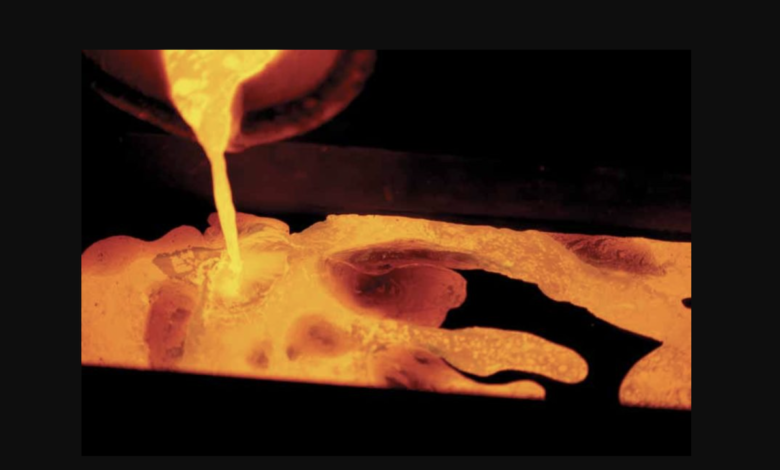How Do You Get Pure Gold Out of Ore?

If you buy a gold bar or gold coin, you get beautiful, shiny metal. Of course, gold doesn’t come out of the ground that way. Gold ore basically looks like — well– a rock.
In order to extract pure gold, refiners put the ore through a multi-step process.
In the first step, the gold ore is crushed and ground into a fine powder. This step increases the surface area of the ore, allowing for better extraction of the gold particles.
The next step is to separate the gold from the other elements in the ore. There are a number of ways used individually or in combination to accomplish this.
The simplest process uses gravity to separate the gold from other elements in the ore. Processors can use a variety of gravity-based separation methods, including jigging, shaking tables, and centrifugal concentrators. These techniques use the difference in density between gold and other minerals in the ore, allowing the gold to be separated and concentrated.
Froth flotation can further separate gold from other elements. In this process, finely ground ore is mixed with water and specific chemicals, creating a frothy solution. As air is bubbled through the mixture, the gold particles attach to the bubbles, forming a gold foam.
Cyanide is used to extract gold from low-grade ore that cannot be efficiently processed through gravity separation or flotation. The finely ground ore is mixed with a dilute solution of sodium cyanide (or potassium cyanide) and water. The cyanide forms a complex with the gold particles, dissolving them into a solution. This process is known as leaching.
Once the gold is in solution, zinc dust or activated carbon is often added to the cyanide solution. The gold particles bond with the zinc or carbon to form solid compounds, which can be easily separated from the solution.
After the gold is separated from the ore, impurities remain and smelting further purifies the gold. This involves heating the gold precipitate at high temperatures to melt it into gold bullion. During this process, any remaining impurities and base metals are oxidized and removed as slag. Refining techniques, such as cupellation or Miller chlorination, may be used at this stage to achieve higher purity.
In order to reach a purity level of .999 (99.9%), refiners use electrolysis. Gold retrieved from the smelting process is dissolved in an electrolyte solution and zapped with an electric current. The gold is then selectively deposited onto a cathode, while other impurities settle as anode sludge. Electrorefining removes most remaining trace impurities and increases the purity of the gold.
Once the gold is purified, it can be melted and formed into bars, coins, or even 24-karat jewelry.
Call 1-888-GOLD-160 and speak with a Precious Metals Specialist today!
Buka akaun dagangan patuh syariah anda di Weltrade.
Source link







